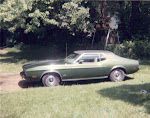I’m attempting to read the Town of Normal Bicycle and Pedestrian Master Plan (DRAFT) but it’s not easy because it’s a lengthy and very detailed plan. That’s good in terms of covering all possible issues but it sure makes it hard for the reader to stay focused. I’ll admit up front that I don’t own a bicycle (never have – there wasn’t much pavement for riding bikes on the family farm) and I had my fill of being a pedestrian during college and graduate school (didn’t get a car until my second year of graduate school and even then, I only used it for long-distance travel because I could walk or take a bus locally). So, I figure that I’m entitled to criticize only a few items from the plan (DRAFT – it’s just a DRAFT) that concern me.
First, the main assumption underlying the plan is that in the future (the plan covers 20 years), lots of people will be walking and riding bikes around Normal. The projections given in the plan take into account current biking and walking statistics, as well as lots of other current and projected statistics. Even so, I think the projections are a little questionable because: the population is getting older (not that “older” people won’t walk or bike, but they will probably do so in fewer numbers than “younger” people); more people will be commuting from suburbs (as stated in the plan); and the assumption that many people who work at home will walk or bike during the day is kind of odd (unless that was a finding of the American Community Survey). And the assumption that demand will increase with better pedestrian and biker access is, well, just a prediction. If it makes driving around town a bigger hassle, then that prediction just might come true!
Second, putting some of our roads on a diet worries me (“road diet” refers to narrowing driving lanes). I was pleased to read that many roads in Normal actually exceed the 11-foot or 10-foot standard for driving lanes. Hooray for Normal! I’m fortunate in not worrying too much about the width of driving lanes because I drive a small car. But there are a lot of SUVs, delivery trucks, and semis being driven around here. Would they fit comfortably in narrower lanes? Do we all get along well enough to be that close to the vehicle in the next lane? Does it leave enough room for avoiding potholes and dead squirrels? Will I be able to swerve out of the way of the driver who is weaving around while talking on a cell phone (or maybe engaging in some other future driver distraction)?
Third, I’m concerned about the suggestion of legally requiring everyone to clear sidewalks when they are covered with snow and/or ice (clearing at least a 5-foot width if the sidewalk is wider than 5 feet; 5 feet -- that’s half of a driving lane!). Yes, it would be nice if everyone could get out there immediately after a significant snowfall and clear the sidewalk for the many, many people who love to walk in winter weather. But when you have to get up early and barely have enough energy to shovel the drive (including the large clumps of snow and ice at the foot of the drive if the plow has come by), it’s extremely difficult to find the time and energy to also do the sidewalk and still make it to work on time (and without back pain) (obviously, I use a shovel, which, I would like to point out, is environmentally friendly). I think that a policy that allows for a reasonable amount of time to get the sidewalk cleared and which relies on peer pressure rather than fines would work.
Those are my concerns at this point (not having read the document cover-to-cover yet). I don’t want to give the impression that I’m against the spirit of the plan (well, the DRAFT of the spirit). I really like the idea of people walking and biking places, with lots of clearly designated paths and safe intersections. It has a nice, small town feel to it. But resources are limited, as always, so the cost of this plan has to be weighed against other Normal needs.
Subscribe to:
Post Comments (Atom)







No comments:
Post a Comment